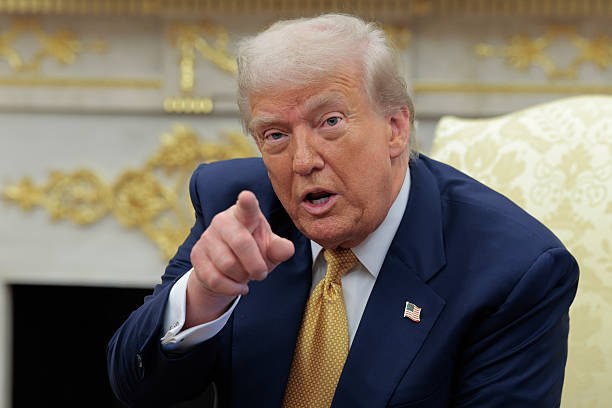
President Donald Trump threatened a wide array of tariffs during his tenure, from cars and steel to oil, gas, and even movies. While some were implemented, others appear to have quietly fallen by the wayside.
Key Takeaways
- Trump threatened tariffs on movies, oil and gas, and agricultural products but hasn’t acted on them in months.
- Investigations continue for potential tariffs on planes, drones, cranes, and other goods.
- Trade policies included countries such as Canada, BRICS nations, and European allies, but many proposed tariffs remain unrealized.
Movies
In May, Trump announced a 100% tariff on foreign-made films, citing concerns that other countries were luring American filmmakers away with incentives.
“The Movie Industry in America is DYING a very fast death,” Trump wrote on social media.
Experts questioned how a tariff on intangible goods like movies would work. So far, no such tariff has been imposed.
BRICS Countries
Trump also threatened tariffs on members of the BRICS trading bloc—Brazil, Russia, India, China, and South Africa—if they pursued “anti-dollar” policies. He proposed up to 100% tariffs if the nations de-dollarized.
While the threat never materialized, the U.S. did impose a 50% tariff on Brazil over social media censorship issues.
Canadian Dairy and Lumber
Trump aimed to counter Canada’s 250% tariff on U.S. dairy and lumber, proposing matching measures. Negotiations under the USMCA have led to a 35% U.S. tariff, with many exemptions still in place.
Agricultural Products
In March, Trump hinted at tariffs on agricultural imports, promising U.S. farmers a boost. Some “reciprocal” tariffs were later applied to trading partners, but no specific agriculture-focused tariffs have been enacted.
Oil and Gas
Trump indicated tariffs on oil and gas starting February 18, without naming specific countries. These tariffs have not been implemented.
France, Austria, Italy, Spain, Turkey, and the UK
An executive order in February directed investigations into these countries’ trade practices, with the possibility of tariffs to protect U.S. tech firms. Most have since negotiated trade agreements: EU countries at 15% and the UK at 10%.
Cranes, Jet Engines, and More
The Commerce Department continues to investigate planes, jet engines, drones, cranes, polysilicon, and critical minerals as possible candidates for future tariffs. These investigations represent the first step toward potential trade measures.
The Takeaway
Many of Trump’s tariff threats—from movies to oil and gas—remain unfulfilled. While some measures have been implemented, numerous proposals linger in limbo, highlighting the complex and evolving landscape of U.S. trade policy.